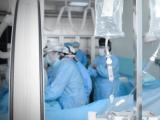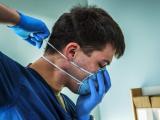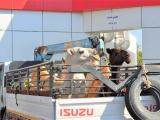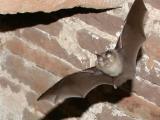The World Health Organization (WHO) today announced a MERS-CoV infection in a 61-year-old man from Iran, while a new research report underscored the likelihood that camels can be a source of the virus.
The reports come amid a leveling off of MERS-CoV (Middle East respiratory syndrome coronavirus) activity in Saudi Arabia but ahead of the start of the busiest travel time for religious pilgrimages to the country.
WHO details cases in Iran and Saudi Arabia
Iranian health officials reported the case to the WHO on May 1. The man, from Kahnooj in the country's southeastern province of Kerman, got sick on Mar 18 and was hospitalized 8 days later. He had no underlying medical conditions and was discharged from the hospital on Apr 27.
The report mark's Iran's first MERS-CoV case since last July.
Investigators found that his only known risk factor was contact with two people who had flu-like symptoms after returning from Umrah in Saudi Arabia on Mar 10. The WHO said tracing of the Iranian man's household and healthcare contacts is still under way, as is the investigation of the illnesses in the two returning travelers who were sick.
The WHO said the two individuals didn't have any history of exposure to known MERS-CoV risk factors while they were performing Umrah.
In a separate statement today the WHO provided more details about a MERS-CoV case first announced by Saudi Arabia, also on May 1; since then the country has reported two additional cases. The statement said the 35-year-old man from Khamis Mushait in the southwestern part of the country started having symptoms Apr 27, was hospitalized 2 days later, and is listed in critical condition.
According to the investigation, the man's only known risk factor is that he lived adjacent to a camel market. However, he didn't have direct contact with the animals or consume raw camel products. Tracing of the patient's household and healthcare contacts is ongoing, the WHO said.
The cases lift the global MERS-CoV total to 1,112 lab-confirmed cases, with at least 422 deaths. Most of the cases have been reported in Saudi Arabia, where the health ministry has put the country's total at 984 cases, 429 of them fatal, according to an update today.
CDC posts Hajj and Umrah travel notice
In a related development, the US Centers for Disease Control and Prevention (CDC) on May 6 issued a yellow travel alert for upcoming Hajj and Umrah travel to Saudi Arabia because of unique health risks surrounding mass gatherings.
The Hajj will take place from Sep 20 to 25 this year, and though Umrah pilgrimages can be performed any time of year, the CDC said the religious sites will likely be more crowded during the Ramadan month, which begins Jun 17.
The CDC urged travelers to take enhanced precautions, especially regarding safety and security, heat, foodborne illnesses, and mosquito-borne illnesses. The agency said a MERS travel alert is already in place.
The agency isn't recommending that travelers change their plans because of MERS-CoV, but it pointed out that the WHO has urged people with underlying health conditions to take additional precautions, such as avoiding contact with camels, refraining from drinking raw camel milk or camel urine, and avoiding eating undercooked meat, especially from camels.
Occupational MERS exposure in Qatar
In medical literature developments, an international research team says people in Qatar who handle dromedary camels are at greater risk for MERS-CoV than the general population.
The investigators analyzed serum samples from Qataris who did and didn't have contact with camels, comparing the findings with those for control samples from people in the Netherlands and Germany. The researchers, from Qatar, Egypt, the Netherlands, and Germany, published their findings today in Emerging Infectious Diseases.
Of the 498 serum samples from Qatar, 294 were from people who had daily occupational contact with dromedary camels, which included slaughterhouse workers, camel racetrack workers, and camel farmers. Molecular data showed that MERS-CoV was circulating in camels at the locations where human serum samples were obtained.
The researchers also examined 56 random samples from construction workers and 10 from people working on sheep farms in northern Qatar.
To confirm the testing algorithm specificity, they examined 138 serum samples from the Netherlands and Germany.
When the samples were analyzed, neutralizing antibodies to MERS-CoV were found only in the Qataris who had camel contact, which the authors said suggests dromedary exposure as an infection risk.
Seropositive study participants didn't report severe health problems, which the authors said provides evidence for mild or asymptomatic human infections that frequently go unrecognized. That in turn suggests that the overall 37.1% case-fatality rate for MERS-CoV is probably an overestimation.
Airline contact tracing
In another study involving MERS-CoV, health officials from the United Kingdom shared lessons learned from airline contact tracing in two cases. The report appeared yesterday in Eurosurveillance and described the public health response after infections were detected in two people shortly after each flew through London's Heathrow International Airport on the way from Saudi Arabia to the United States in two separate May 2014 incidents.
The researchers noted difficulties in the responses, which included delays in getting contact details for passengers and uncertainty about which passengers to follow more closely. They noted that airlines were cooperative but that systems to supply passenger lists and details when an infectious disease threat surfaces should be strengthened.
No other illnesses were detected in relation to either case, which seems to fit with other reports of MERS-CoV on commercial flights, the team noted. They added that the WHO's recommendation that contact tracing be limited to passengers in the same row as well as two rows ahead of and two rows behind the index case seems to be an appropriate response, with evaluation of the policy needed in each specific instance. (In the current study, only passengers in two seats all around each index case were traced, with remaining passengers and crew alerted to watch for symptoms for 2 weeks.)
The authors also noted that human-to-human transmission of the virus seems to be concentrated in household and healthcare settings and that a better understanding of the transmission risk is needed to inform such public health responses as airline contact tracing.
See also:
May 8 WHO statement on Iran MERS-CoV case
May 8 WHO statement on recent Saudi MERS-CoV case
May 6 CDC travel notice
May 8 Emerg Infect Dis report
May 6 CDC travel notice
May 7 Eurosurveill report



















